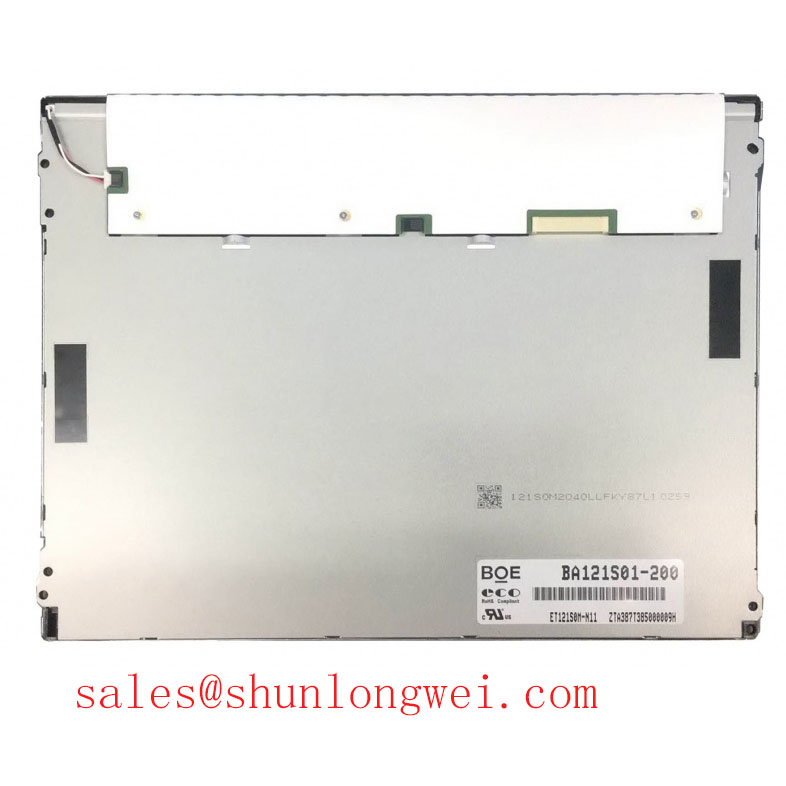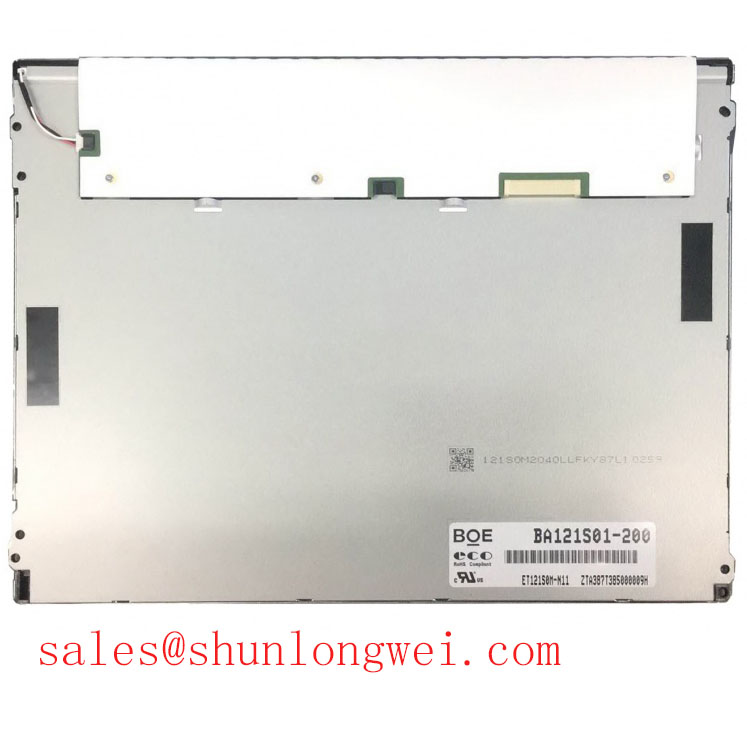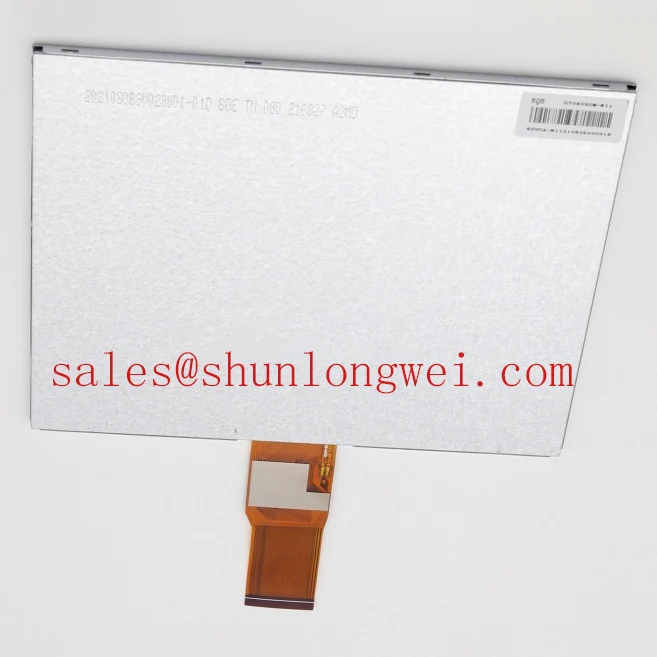Content last revised on October 7, 2025
HR215WU1-120: An In-Depth Technical Review of the BOE 21.5-Inch Full HD Display Module
The HR215WU1-120 is a 21.5-inch a-Si TFT-LCD module from BOE, engineered for applications demanding consistent visual performance and long-term operational stability. Delivering full HD resolution with wide viewing angles, this display provides the foundational quality necessary for industrial monitors, control systems, and specialized PC workstations. Key specifications include: 1920x1080 Resolution | 250 cd/m² Brightness | LVDS (2 ch, 8-bit) Interface. This model is distinguished by its excellent color fidelity and symmetric, wide viewing angles. For system designers, this translates directly into greater user interface flexibility and dependable readability in varied operational environments. The panel's performance is particularly suited for systems where color accuracy and off-axis viewability are critical, such as in process control monitors or collaborative workstations.
Key Parameter Overview
Decoding the Specs for System Integration
The technical specifications of the HR215WU1-120 are pivotal for system-level design, influencing everything from the power supply architecture to the final product's physical enclosure. Understanding these parameters is the first step in harnessing the display's full potential.
| Category | Parameter | Specification | Engineering Value |
|---|---|---|---|
| Display Characteristics | Screen Size | 21.5 inches | Provides a substantial active area for detailed information display in HMI and monitoring applications. |
| Resolution | 1920(RGB)×1080 (FHD) | Delivers sharp, clear imagery essential for complex GUIs and data visualization, with a pixel density of 102 PPI. | |
| Display Mode | ADS, Normally Black, Transmissive | Offers superior color performance and wide viewing angles, with the added benefit of a deep black state when pixels are off. | |
| Optical Performance | Luminance | 250 cd/m² (Typ.) | Ensures sufficient brightness for typical indoor industrial and office environments. |
| Contrast Ratio | 1000:1 (Typ.) | Creates a distinct separation between light and dark elements, enhancing image depth and readability. | |
| Viewing Angle | 89/89/89/89 (Typ.) (CR≥10) | Allows for consistent image quality from nearly any viewing direction, critical for multi-user or off-axis viewing scenarios. | |
| Color Gamut | 98% sRGB (Typ.) | Provides rich and accurate color reproduction, vital for applications where color fidelity is a functional requirement. | |
| Interface & Electrical | Signal Interface | LVDS (2 ch, 8-bit), 30 pins | A robust and widely adopted interface that simplifies integration with a variety of controller boards. |
| Supply Voltage | 5.0V (Typ.) | Operates on a common logic voltage, simplifying power system design. | |
| Mechanical & Environmental | Outline Dimensions | 495.6 × 292.2 × 10.7 mm | Provides precise mechanical data for enclosure and mounting hardware design. |
| Operating Temperature | 0 ~ 50 °C | Suitable for deployment in controlled industrial and commercial environments. | |
| Backlight Lifetime | 30,000 hours (Min.) | The WLED backlight system is engineered for longevity, supporting long-term, continuous operation. |
Download the HR215WU1-120 datasheet for detailed specifications and performance curves.
Application Scenarios & Value
System-Level Benefits in Control and Monitoring Systems
For systems where precise data visualization is paramount, the HR215WU1-120 offers a reliable foundation. Its Full HD resolution and strong color fidelity make it an excellent choice for industrial control terminals, process controllers, and digital signage. The display's primary value lies in its combination of visual performance and long-term reliability. Consider an engineer designing a Human-Machine Interface (HMI) for a factory floor process controller. The challenge is ensuring that operators can clearly read critical status updates and color-coded alerts from various angles and distances. The HR215WU1-120's symmetric 89/89/89/89 viewing angle is not just a number; it directly solves this problem by ensuring that a red warning alert looks consistently red and is legible, whether the operator is standing directly in front of the screen or off to the side. This prevents misinterpretation of data, enhancing operational safety and efficiency. For applications requiring a similar screen size but with integrated touch functionality or different brightness levels, the related G215HAN01.0 offers alternative features for consideration.
Frequently Asked Questions (FAQ)
What is the key advantage of the ADS (Advanced Super Dimension Switch) technology used in the HR215WU1-120?
ADS technology, a type of IPS (In-Plane Switching) technology, is the primary reason for the panel's superior viewing angles and color accuracy. Unlike older TN panels where colors can shift dramatically when viewed off-center, ADS ensures color and contrast stability, making it ideal for professional and industrial applications.
How does the "Normally Black" display mode benefit industrial applications?
A "Normally Black" display means that pixels are opaque in their default, unpowered state. This results in a deeper, more uniform black level across the screen, which enhances the perceived contrast ratio. For an industrial interface, this means text and graphics appear sharper against a dark background, improving readability.
What does the 30,000-hour backlight lifetime mean in practical terms for a system integrator?
The 30,000-hour minimum lifetime of the WLED backlight translates to over 3.4 years of continuous, 24/7 operation. This is a critical metric for systems deployed in environments where maintenance access is limited or costly. It signifies a high level of reliability and contributes to a lower total cost of ownership.
Is an external backlight driver required for the HR215WU1-120?
Yes, the datasheet specifies that the WLED backlight system is incorporated, but it does not include a backlight driver. System designers must integrate a separate, compatible LED driver board to power and control the backlight brightness.
What considerations are needed for the 5.0V power supply?
The typical 5.0V supply voltage is standard for this type of panel. However, designers must ensure the power source is well-regulated and can handle the specified typical and maximum current draw (0.5A/1.2A) to prevent display flicker or damage, especially during power-on sequences.
Technical Deep Dive
A Closer Look at Viewing Angle and Color Fidelity
The specified viewing angle of 89/89/89/89 is one of this panel's most significant engineering assets. This specification is measured at a contrast ratio (CR) of greater than or equal to 10. In practical terms, this means that even at an extreme angle of 89 degrees from the center, the display maintains a clear distinction between light and dark, ensuring content remains legible. Think of it like a high-quality printed photograph versus a cheap one; the high-quality print looks good from almost any angle, while the cheap one might glare or wash out. This characteristic is a direct result of the IPS-type ADS panel structure, which aligns liquid crystals horizontally. This design minimizes light leakage and color distortion, providing a stable and predictable canvas for user interfaces where accuracy is non-negotiable.
Industry Insights & Strategic Advantage
Meeting the Demands of Modern Industrial HMI Design
The trend in industrial automation and control systems is toward more graphical, data-rich user interfaces. The HR215WU1-120 directly supports this evolution. Its Full HD resolution provides the necessary pixel real estate to display complex SCADA layouts, multiple data streams, and high-resolution schematics without compromising clarity. Furthermore, its 98% sRGB color gamut coverage ensures that standardized color codes used in safety warnings (e.g., ANSI Z535.1) are reproduced accurately. This alignment with industry standards is not just a feature but a strategic advantage, as it helps manufacturers achieve compliance and deliver systems that are both intuitive and safe for operators. As industries move towards smarter manufacturing, displays like the one from AUO and this BOE model become the critical window into increasingly complex automated processes.











